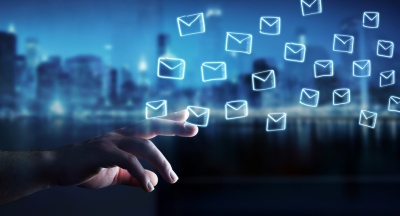Trigger emails are a segment of email marketing. They are automated emails that are “triggered” or sent out according to the interactions that people have had with your business, such as a visit to your web page, engagement with social media, a purchase on an ecommerce shop, or opening an email. It has proven to be a highly effective email marketing campaign.
Email marketing has been used by business owners for some time. It’s an effective way to reach potential and existing customers and boost the overall success of a business. As with everything in the world of marketing, advances to traditional email marketing have been made in recent years, and one of those advances is triggered emails.
What is an Email Trigger Marketing Campaign?
Triggered email marketing campaigns are exactly what the name suggests: automated emails that are triggered (sent out) automatically when a consumer makes a certain interaction with a business. For example, a trigger email may be sent out to people on your mailing list when they visit your web page, when they “like” or comment on one of your social media posts, or when they purchase an item from your online store.
Examples of triggered emails include:
- When someone signs up for a product or service that you offer, a welcome email is sent to them.
- When someone hasn’t logged into your platform for a specific period of time, an email is sent to them to let them know that they are missed.
- When someone abandons a shopping cart before checking out, an email is sent to them that includes a special offer.
Triggered emails can be segmented even further into transactional, recurring, and threshold triggers. Examples of these types of triggered emails include:
- Transactional. Emails that are sent out as per a direct transaction that has been established with a subscriber; when a subscriber makes a purchase, or updates his profile, for example.
- Recurring. These emails are sent out based on a specific date that has been filed in your email list; a customer’s birthday, or on the date that a membership should be renewed, for example.
- Threshold. These triggered emails are sent out when a subscriber meets a specific threshold; purchasing a certain amount of products, or spending a certain amount of money, for example.
Benefits of Triggered Email Marketing
This type of email marketing can offer business owners several benefits, the most notable of which include:
- Increased customer loyalty. Triggered emails make subscribers and customers feel important. They are a fantastic customer service tool, as they let customers know that they come first and that your business is paying attention to and responding to their interests and needs. As such, this type of email marketing campaign can help to increase the loyalty of your customers.
- Greater brand awareness. By responding quickly and in a relevant way to the actions that your subscribers or customers take, you can boost the awareness of your brand. That’s because these emails are customize to the customer’s immediate interests or needs and puts your brand right in their view.
- Improved efficiency of operations. Saving time is a vital for any business owner, and since triggered email marketing campaigns are automated, they can help you save a great deal of time. Simply set up a triggered email campaign, turn it on, and let it do the work for you while you invest your time on other aspects of your business.
- More revenue. Triggered emails offer business owners ample opportunities to engage with their potential and existing customers, which can translate to a significant increase in revenue.
Tips for Effective Triggered Email Marketing
If you want to make the most of your triggered email marketing strategy, you’re going to want to be creative. Here’s a look at some tips that will help you get the most out of your campaign:
- Send emails when subscribers visit a specific page on your website. Ideally, you should have them sent out when someone visits a page that is of particular importance, such as your pricing page or a shopping cart. Your email could highlight key features of a product, for example.
- Send messages when someone visits your site from a social network; Facebook, Twitter, Instagram, etc. The email could invite the person to follow you on those networks.
- Emails can be sent when customers make purchases. You can thank them for purchasing an item, and you can also up-sell or cross-sell. For example, you might include information about a related product that a customer might be interested in.
Conclusion
Triggered email marketing is an easy, cost-effective way to engage with your customers and subscribers. These campaigns have been proven to provide an excellent return on investment, and best of all – they’re automated!
